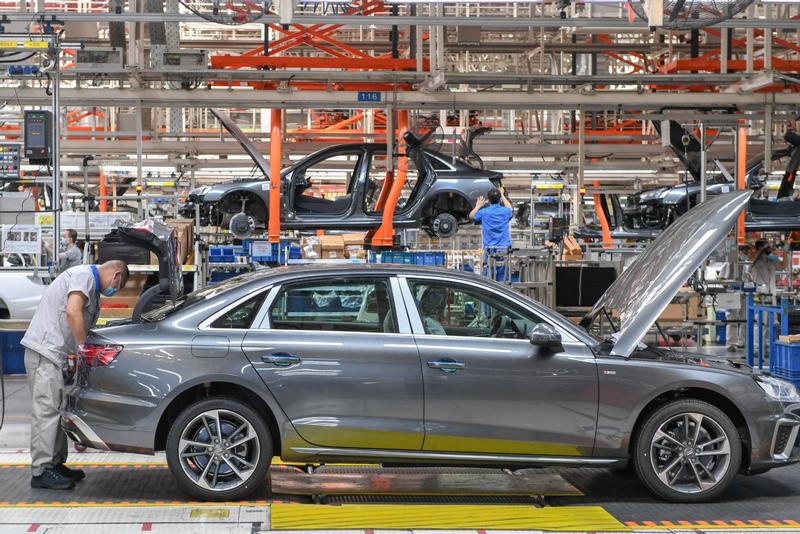 In this undated photo, workers assemble vehicles at an FAW-Volkswagen Automobile Co Ltd facility in Changchun, Jilin province. (PHOTO / XINHUA)
In this undated photo, workers assemble vehicles at an FAW-Volkswagen Automobile Co Ltd facility in Changchun, Jilin province. (PHOTO / XINHUA)
BEIJING - In its race against the latest COVID-19 outbreaks, China is making all-out efforts to bring life back to normal with fine-tuned virus control measures.
In response to sporadic outbreaks in some 30 provincial areas in the country since March, China has been adhering to a dynamic zero-COVID approach, taking swift and precise actions to curb new cases while treating the infected.
While stringent control measures inevitably lead to short-term economic pains, such an approach has proven to bring long-term gains for the economy and society as a whole.
As of Monday, 496 out of the 500 major provincial-level enterprises in Jilin have resumed work and production, as the province saw positive gains in containing the virus
In fact, in Shanghai and Northeast China's Jilin province, two areas hardest hit by the latest outbreaks, production is starting to resume as transmission routes are cut off.
ALSO READ: China adheres to dynamic zero-COVID approach as cases spike
As of Monday, 496 out of the 500 major provincial-level enterprises in Jilin have resumed work and production, as the province saw positive gains in containing the virus.
On Tuesday, US carmaker Tesla's Shanghai factory officially resumed production, with about 8,000 employees back to work thus far, after it suspended production for over 20 days amid the city's strict virus control measures.
"The impact of the epidemic on domestic demand is only temporary," said Meng Wei, spokesperson for the National Development and Reform Commission.
The dynamic zero-COVID approach has proven effective in the past two years in balancing economic growth and epidemic control. China was among the very first countries to emerge from the virus's shadow in 2020 and achieved 8.1 percent year-on-year growth in 2021.
Entering 2022, the spread of the highly transmittable Omicron variant poses new challenges for the government. Instead of "lying flat" and abandoning social distancing measures, officials chose to make responses faster and more targeted.
Wu Zunyou, chief epidemiologist with the Chinese Center for Disease Control and Prevention, said the essence of China's zero COVID-19 policy is early detection and early control.
"When we talk about the dynamic zero-COVID approach, we do not mean 'zero infection'," Wu said, adding that as long as the cases can be detected and controlled at the earliest possible time, the impact of the virus on the overall economy can be minimized.
While racing against time to contain the spread of the virus, officials are fine-tuning measures to avoid overly burdening the supply chain.
In a recent national teleconference, Vice-Premier Liu He urged efforts to eliminate obstacles to the flow of goods across the country and establish a "white list" for key companies in the industrial chain.
As the country gets the epidemic under control and policy effects gradually take hold, China's economy will get back to normal, Meng said.


